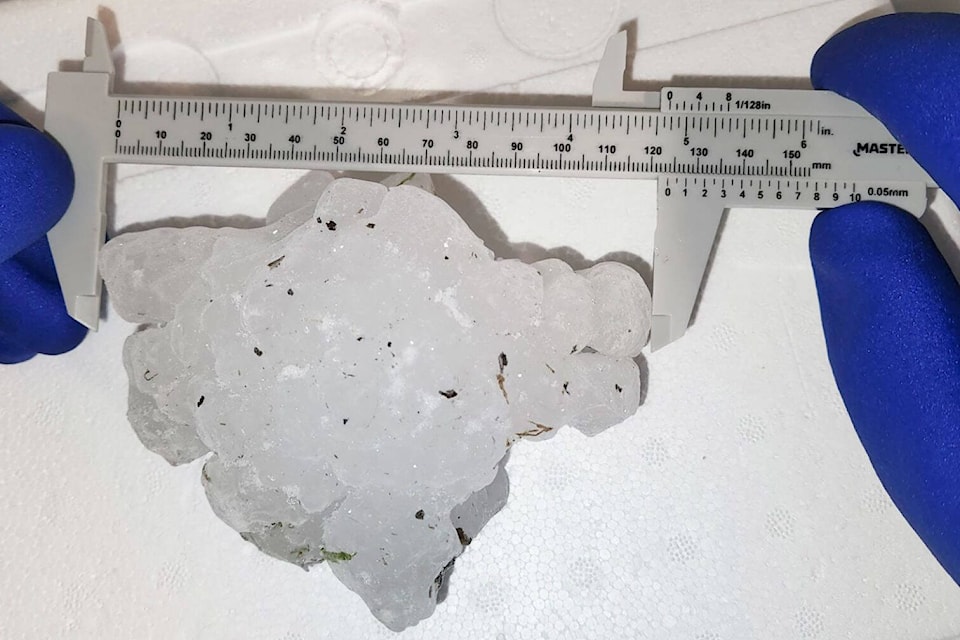A Monday hailstorm that hammered the Markerville area is one for the record books.
Western University researchers scooped up a Canadian record hailstone weighing 292.71 grams (10.3 ounces) following a Monday storm near Markerville. The huge chunk of ice eclipses the 290-gram hailstone collected in Cedoux, Sask. on July 31, 1973.
The Markerville hailstone had a 123-mm diameter (4.8 inches), slightly bigger than a standard 120-mm DVD, says a Wednesday news release from Western University.
A team from the university’s Northern Hail Project followed the hailstorm and filled seven bags with hailstones baseball-sized or larger. The samples are being stored in a freezer. The five-year hail project is in its first year and is based out of Red Deer.
“It wasn’t until I returned and started sifting through the bags that I found the record-breaking stone,” said hail project team leader Francis Lavigne-Theriault in the news release. “It was bagged with other stones without realizing what we had in our possession.”
Hail project executive director Julian Brimelow says severe weather experts world-wide track record hailstones. Only 22 recorded hailstones have topped 290 grams.
“Finding large hailstones like this is like hitting the jackpot so this Markerville sample joins an elite club of giant hailstones,” said Brimelow. “This stone will also help us refine our estimate of just how large it is possible for hail to grow.”
Because giant hailstones are so rare, the international research community does not have a good understanding yet of what conditions are required for hailstorms to produce them.
“Every new data point helps inform us on what conditions are required,” said Brimelow. “Once we have measured and 3D-scanned the Markerville hailstone, we can then make thin sections. The growth layers evident in those will reveal information on the hailstone’s growth history in the storm.”
The researchers can also use ice from the different layers for chemical and isotope analyses to also help them understand the hailstone’s journey through the storm.
3-D scans of the stone can also be used to make silicon moulds or 3-D prints that the hail project team can use to make ice replicas for conducting experiments to study fall behaviour and aerodynamics of these giant hailstones.
“By any measure, Monday’s storm was remarkable,” said Brimelow. “If you were to ask experts where in Canada a new record largest hailstone would be found, they would probably say Saskatchewan. We were expecting significant severe hail in Alberta on Monday, but not a new national record.”
The previous Alberta record hailstone fell during the Edmonton tornado on July 31, 1987. That stone weighed 264 grams with a diameter of 104 mm.
For comparison, the current record holder for the largest hailstone in North America is a stone that fell near Vivian, South Dakota on July 23, 2010. That stone weighed 879 grams and had a maximum diameter of 203 mm.
The hail project is a research spinoff of the Northern Tornadoes Project, which was founded in 2017 as a partnership between Western University and ImpactWX.
